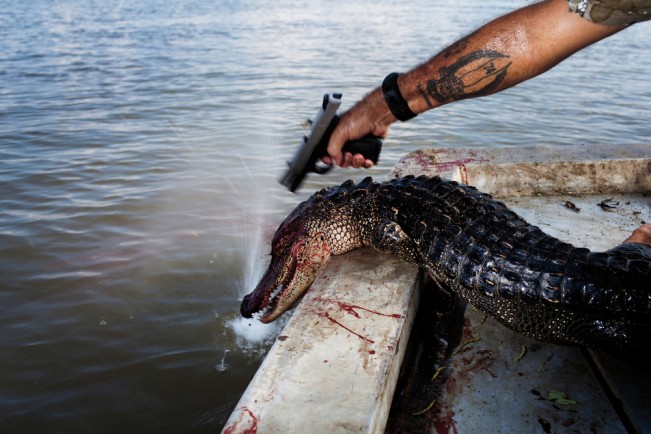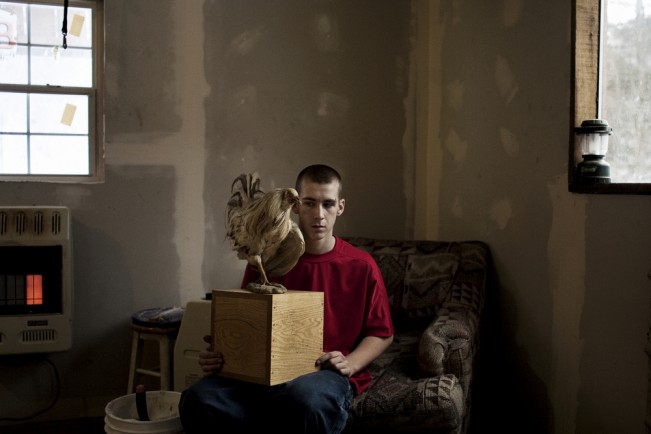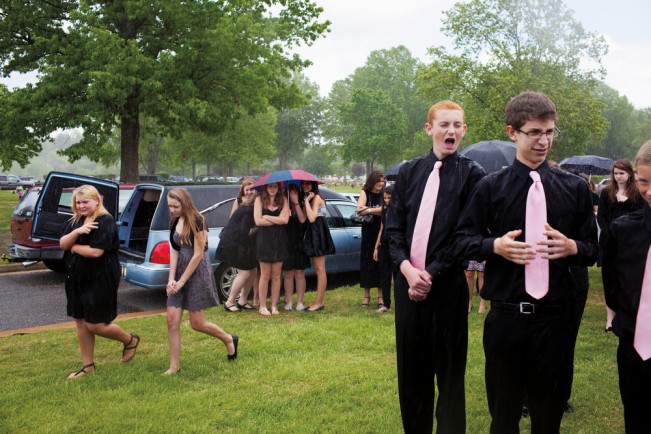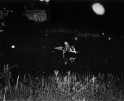Matt Eich: The States Project: Virginia
I first met Matt Eich in 2011 when we were on a three-person panel at the Savannah College of Art and Design. I had long admired his work and accomplishments when I discovered how young he was and that he had been helping support a beautiful family of four for many years. From then, I had many more reasons to respect him. His photographs are made with an abundance of affection, curiosity, and integrity, no matter where he is or who he is photographing.
Matt Eich (b. 1986) is an American-born photographic essayist and portrait photographer. The oldest of four children, he grew up in the peanut farming town of Suffolk, Virginia. Matt studied photojournalism at Ohio University and works for clients including National Geographic, The New Yorker, Esquire, Harper’s, TIME, The New York Times Magazine, Apple, Tiffany & Company, Republic Records and others.
Matt is the recipient of numerous recognitions including POYi’s Community Awareness Award, the Joop Swart Masterclass and PDN’s 30 Emerging Photographers to Watch. His work has been internationally exhibited in both group and solo shows, and is in the permanent collections of The Portland Art Museum, The Museum of Fine Arts Houston, Light Work and the New York Public Library. His long-form projects have received grant support from National Geographic Magazine, the Aaron Siskind Foundation, the Getty Images Grant for Editorial Photography and others.
These days, Matt lives in Charlottesville, Virginia with his family while pursuing an MFA in Photography at Hartford Art School’s International Limited-Residency Program. He continues to accept commissions of all kinds while working on long-term projects about the American Condition.
You are trained in photojournalism, have worked very successfully as a photojournalist and documentary photographer, now working on your Masters of Fine Art. How do you see your photojournalistic/documentarian background informing your work as you move forward? Can you sense your style or interests changing at all as you progress through your MFA studies?
While I come from a documentary/photojournalism background, I’ve never felt that my work has a home in the news cycle. I tend to prefer a longer view, and work slowly. More of a ramble than a sprint. The MFA is certainly requiring me to reframe my thinking, which is story-based, as well as my perceived purpose. This is healthy to an extent. My interests have been slowly evolving though I continue to remain entranced by the possibility of photographs from the real world. There is very little I can add to the serendipitous beauty that surrounds us.
I am fascinated by the way you integrate seamlessly into cultures. In some ways it’s like the work of an anthropologist, but the stories you bring home seem to be more like those of your family rather than any sort of “other.” Can you tell us a little about your experience with this? It seems quite distant from the work of a photojournalist whose job is to get in, get documentation, and get out. What caused you to start making work that was much more immersive? Or have you always worked that way?
That is a huge compliment because when I am allowed into someone’s home my goal is to photograph them with the same intimacy that I would my own family. That is partially to distance myself from the “othering” that documentary photography is often guilty of, but even more it is because I feel a genuine love and respect for people that open their homes to a stranger like me. My working method is driven by questions that usually don’t have answers. It takes a long time for relationships to develop and for the questions to play out. That is how it has always been for me when it comes to photographs. It took a while to figure out that pattern so now I try to have patience and respect the cycle.
I find the photographs of your family to be just as intriguing as the photographs you make outside your home. Do you approach photography with your family any differently? Which do you find more difficult, making photographs in your home or someone else’s? In all of your work, I find a beautiful honesty. Are there things you have encountered in your home or in others’ that you have made a conscious decision not to photograph?
When making photographs at home, I feel like I am given a free pass because my compulsion is so entrenched that my family accepts it and I don’t have to waste time justifying my actions or articulating why. The truth is that the interactions around the family photographs are more nuanced, and family members are just as curious about what I do as the strangers I meet. My wife will often say out of the blue, “I don’t understand you.” In a lot of the recent portraits I am making there is a direct confrontation between the subject and the viewer, where the question seems to be “Why?”
It’s easy to make trite justifications for making a picture, but I find it immensely difficult to articulate the underlying compulsive desire to render the world in a photograph. When I am photographing a stranger, it is easier for me to fully commit to what I am doing, whereas I am always torn in three different directions when I am making work about my family. The hope is that we all become stand-ins for larger ideas and more universal emotions and experiences. I think most everything in the world, both good and bad, deserves to be photographed. That said, in photography timing is everything. Part of making good work is staying attuned to the situation unfolding and the emotional tenor of your environment. You have to know when to put the camera down and just be a father, a husband, a human being.
Posts on Lenscratch may not be reproduced without the permission of the Lenscratch staff and the photographer.
Recommended
-
Jake Corcoran in Conversation With Douglas BreaultAugust 10th, 2025
-
Smith Galtney in Conversation with Douglas BreaultDecember 3rd, 2024
-
Jordan Eagles in Conversation with Douglas BreaultDecember 2nd, 2024
-
Interview with Peah Guilmoth: The Search for Beauty and EscapeFebruary 23rd, 2024
-
In Conversation with Cig Harvey: Beauty, Books, and InstallationFebruary 21st, 2024






























































